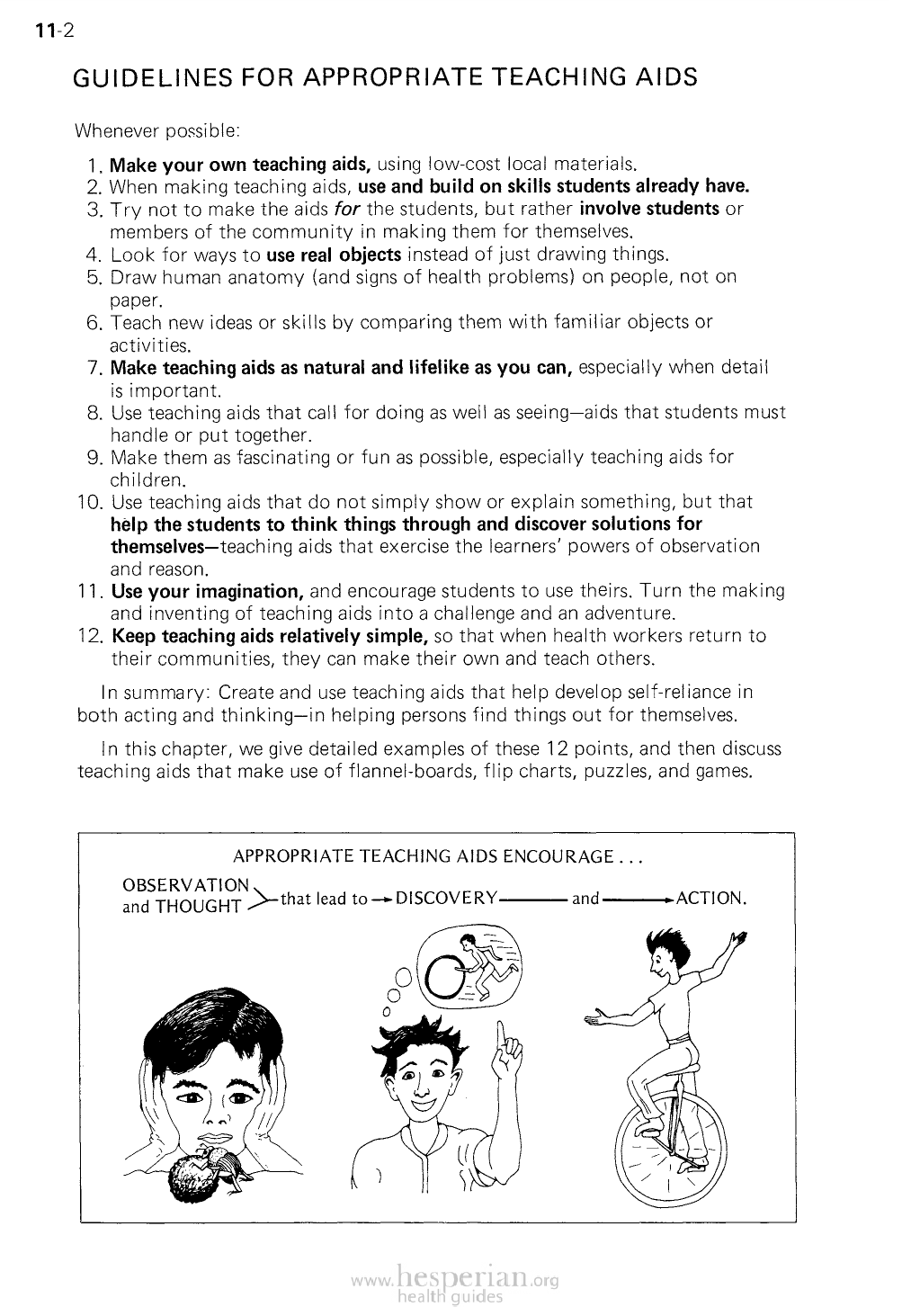
11-2
GUIDELINES FOR APPROPRIATE TEACHING AIDS
Whenever possible:
1. Make your own teaching aids, using low-cost local materials.
2. When making teaching aids, use and build on skills students already have.
3. Try not to make the aids for the students, but rather involve students or
members of the community in making them for themselves.
4. Look for ways to use real objects instead of just drawing things.
5. Draw human anatomy (and signs of health problems) on people, not on
paper.
6. Teach new ideas or skills by comparing them with familiar objects or
activities.
7. Make teaching aids as natural and lifelike as you can, especially when
detail is important.
8. Use teaching aids that call for doing as well as seeing—aids that students
must handle or put together.
9. Make them as fascinating or fun as possible, especially teaching aids for
children.
10. Use teaching aids that do not simply show or explain something, but that
help the students to think things through and discover solutions
for themselves—teaching aids that exercise the learners’ powers of
observation and reason.
11. Use your imagination, and encourage students to use theirs. Turn the
making and inventing of teaching aids into a challenge and an adventure.
12. Keep teaching aids relatively simple, so that when health workers return
to their communities, they can make their own and teach others.
In summary: Create and use teaching aids that help develop self-reliance in both
acting and thinking—in helping persons find things out for themselves.
In this chapter, we give detailed examples of these 12 points, and then discuss
teaching aids that make use of flannel-boards, flip charts, puzzles, and games.
APPROPRIATE TEACHING AIDS ENCOURAGE ....
OBSERVATION
and THOUGHT
that lead to DISCOVERY
and
ACTION.